TIPS FOR STRETCHING GROCERY BUDGET
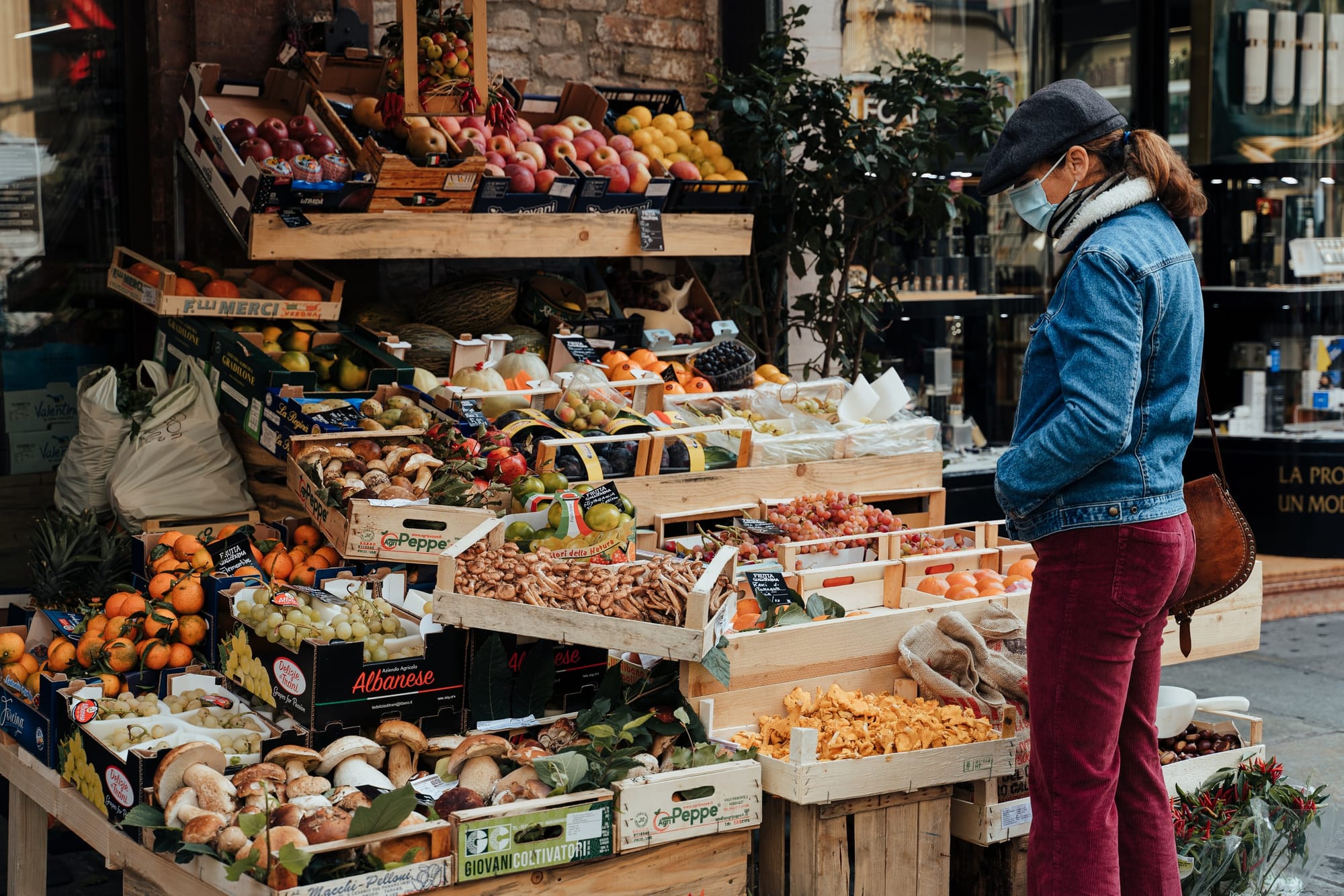
Although overall inflation is starting to cool, shoppers have not seen much relief in terms of grocery prices, which were up 11.8% in December compared with a year earlier. Gone are the days when someone could walk into a grocery store and buy a dozen eggs for $1.50 or a gallon of milk for under $3. Instead, nearly every food group costs more than it did a year ago: grade A eggs are up 138%; margarine, up 43.8%; butter sticks, up 38.5%; all-purpose flour, up 34.5%; and spaghetti and macaroni noodles up 31.3%, according to the most recent Bureau of Labor Statistics (BLS) data. Fresh fruits and vegetables have also seen price increases, though lettuce is undoubtedly the biggest culprit, increasing 24.9% in the last twelve months. Families across the country are struggling with the additional costs. Consumers may be reluctant to believe there are ways to truly maximize their grocery purchases while prices remain sky-high. However, there are still ways to cut down on your grocery bills.
Stretch time between supermarket visits
Make yourself wait three additional days to go food shopping after you think, “It’s time to go to the grocery store.” Always keep staples like rice, eggs, beans, canned salmon and frozen veggies available to create reliable dinner options that will save money in the end, since you will be using what is already on hand. It will also help decrease food waste, which is important, since a shocking 40 percent of food in the United States is wasted, costing the country $165 billion.
Log what’s in Your Refrigerator and Pantry
Get your refrigerator and pantry organized and documented. Whether you want to remove everything all at once, or work shelf by shelf, the idea here is to take inventory of what you currently have available in the house. Knowing exactly what frozen ingredients or meals you already have on hand is an easy way to cut down on your shopping list from week to week.
Plan Ahead.
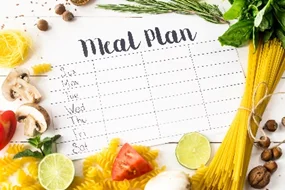
Make a strategic shopping list … and stick to it. Once you have scoured the contents of your kitchen, make your shopping list. Not planning meals ahead of time is the best way to blow a lot of money on eating out, picking up, and driving through. No more wondering, “What’s for dinner”? Once it is a habit, you will be impressed by how much time and money you save. To start, create a list of recipes and the quantities of all the ingredients you will need. Knowing what you are going to cook when you go shopping can help you purchase the necessary quantities of food. Look for recipes that use similar ingredients to help you save even more money. For example, if you are buying a bag of carrots for vegetable soup, think about other ways to use the carrots, such as roasted in the oven with a whole chicken, chopped into a salad or shredded into slaw.
Eat the Sales

Plan your meals around what is on sale, and you will chop your food costs—by up to 50% or more. In addition, when you can load up on super sale items to last until the next time they go on sale. Nearly every grocery store or supermarket publishes a weekly sales ad flyer—and posts it online. It is a handy tool to help with meal planning.
Buy Produce on Sale and in Season.
Fruits and vegetables can be expensive, so watch for sales. Consider substituting a cheaper fruit or vegetable for the more expensive one listed in a recipe. Additionally, fruits and vegetables tend to be less expensive when you buy them in season. When buying foods out of season, you will find better prices in the frozen section. Also, visit your local farmers market during peak season, since it can be a cheaper option than the grocery store.
Shop Farmers Markets Toward the end of the Day
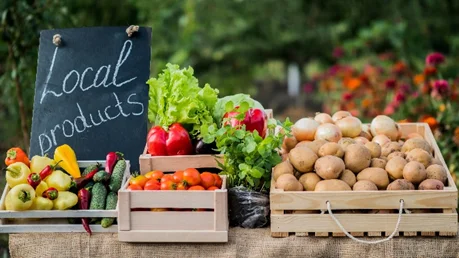
Your local farmers market probably has better deals than you think — especially if you go 30 minutes before the market closes. Farmers and vendors tend to discount some or all of the produce at the end of the day instead of hauling it back to the farm. Just know that certain items might be sold out or you might have less of a selection.
Shop the Freezer Section for Produce
While fresh produce is super tempting this time of year, go with the frozen stuff if you are looking to save and/or have concerns about being able to use something up in time. Frozen fruits and veggies cost a whopping 20 to 30 percent less than their fresh versions. In addition, they are still packed with nutrients. Plus, they will not go bad if not eaten in a short amount of time.
Buy the Store Brand
Instead of the national name-brand product, go for the store brand and you can shave 5 to 50 percent off your bill, according to some estimates. Store brands are just as tasty. Try these: Target’s Good & Gather, Thrive Market’s line, and of course, Kirkland Signature.
Only Buy Meat When it’s on Sale
Meat — including beef, pork, and poultry — has been subject to some of the highest price increases over the past few years. Between weekly, daily, and even end-of-day flash sales, there are ways to offset the price. You can also consider skipping meat for the week altogether.
“Grate” Savings
You pay a lot to have someone else grate your cheese for you—at least twice the price of buying cheese by the block. Currently, cheese in blocks runs from about $2 to $2.50 a pound for the store brand to about $5.00 a pound and more for name brands. The very same cheeses, pre-grated, run almost exactly double across the board, $4 to $10 a pound. Here is the tip: Grate it yourself. It will stay fresher, and you will save money, too.
Buy Foods Whole
Buying pre-cut fruits and vegetables can add unnecessary costs to your shopping trip. Products such as pre-packaged shredded carrots and pre-cut fruits and veggies are more expensive than buying them whole and shredding them at home. Purchase fresh produce if you can use it within a week or so, otherwise opt for frozen produce—it is just as nutrient-rich as the fresh versions.
Eat the Sales

Plan your meals around what is on sale, and you will chop your food costs—by up to 50% or more. In addition, when you can load up on super sale items to last until the next time they go on sale. Nearly every grocery store or supermarket publishes a weekly sales ad flyer—and posts it online. What a handy tool to help with meal planning. Eat the sales to stretch your food budget!
Buy in Bulk
Buying in bulk quantity, such as rice or nuts, offers substantial savings. Large bags of frozen fruit, for example, tend to be much cheaper (per pound) than smaller bags. Pasta, canned goods, shelf stable milk such as soy, oat or rice, are much more affordable when bought in quantity instead of singly.
Make Meat the Accent
Often, meat is the highlight of American dinners, but it does not have to be. Making meat an accent rather than the main focus can help cut costs. Instead, highlight a variety of colorful vegetables and plant proteins, such as beans, tofu, quinoa and nuts. As an added bonus, research shows there are health benefits to eating a more plant-based diet.
Make Soup
Soup is a delicious and filling meal and very inexpensive. It is also a great way to use leftover foods from the fridge. Do you have half a carrot, two celery stalks and a can of beans? Toss them in a pot with chicken or vegetable stock to create a simple vegetable soup.
Start your Meal Planning with a Bag of Rice
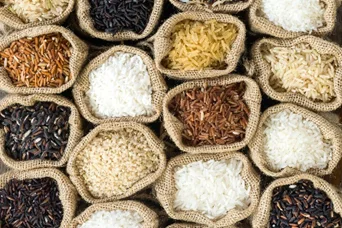
Easy-to-prepare grains, like rice, are the base of easy, affordable, and versatile meals. Try making a big batch of rice on Sunday or Monday and then uses it throughout the week. You can create dozens of budget-friendly meals just by pairing rice with a simple protein, fresh or frozen vegetables.
Breakfast for Dinner
Once a week or so, consider having breakfast for dinner. Kids love this, and so will your food budget. A meal of eggs, pancakes, or waffles and juice is nutritious, meatless, and super cheap (relatively, so).
Get creative with leftovers and watch how far you can stretch your food dollars. Those leftover baked potatoes from last night’s dinner will make fabulous hash browns or fried potatoes to go with scrambled eggs.
Leftover Buffet
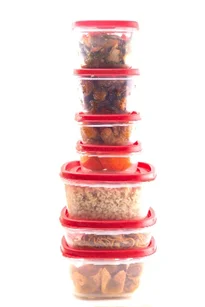
Always save leftovers.
Even if it is just one serving, it is worth it. Store leftovers in a glass container so you can pop it right in the microwave for quick prep. Take the remains of the week’s meals and serve them for dinner, buffet-style. Need to pad the offerings? Raid the fridge for veggies and dip, make a green salad, or toast some crusty bread. Keep this idea handy. You just might decide to make Leftover Night a regular weekly occurrence!
Pack your lunch (and your kids’)
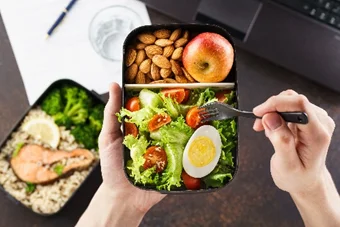
Buying a meal at a fast restaurant is now over $10 in our area. That is $50 a week! Get in the habit of packing your lunch each evening when you are cleaning up after dinner. You are more likely to follow through on your resolution to pack lunches if you do it the night before rather than try to remember to do it in the morning. You can quickly pack a lunch by adding a container filled with last night’s leftovers from dinner to a brown bag and a piece of fruit. Not only will you save money by not eating fast food for lunch, but you will also reduce food waste, and eat a healthier meal.
A child’s lunch can be packed for less than $1 per meal and it is much healthier than cafeteria food
Fill up on Rice and Pasta
In most third world countries, the staple food is some version of rice and beans. Note that when beans and grains combine, they form a complete protein source. If meat is necessary, make it part of the show rather than the main attraction. You can stretch your grocery dollars by incorporating inexpensive, filling foods like rice, pasta, and beans into your meals.
Stretch the Meat in Meals with Beans
Beans have a wonderful texture and when added to recipes, they can stretch your meats twice as far. You can also substitute beans for meat in recipes. To really save yourself a good amount of money, buy them dry and in bulk rather than in a can and cook them yourself. If your family does not like beans, then try lentils. They are smaller and work well when mixed with ground meat.
Make Meals with what you have
Do you have a mishmash of stuff in your pantry that you do not know what to do with? Try using a website like SuperCook to help you come up with unique recipes. Use up the food you already have instead of spending more at the store.

